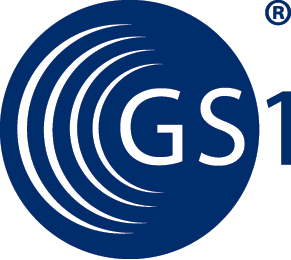|
- |
C |
1 |
- |
Service string advice |
|
The service string advice shall begin with the upper case characters UNA immediately followed by six characters in the order shown below. The same character shall not be used in more than one position of the UNA. |
|
| |
|
- |
M |
1 |
- |
Interchange header |
|
This segment is used to envelope the interchange, as well as to identify both, the party to whom the interchange is sent and the party who has sent the interchange. The principle of the UNB segment is the same as a physical envelope which covers one or more letters or documents, and which details, both the address where delivery is to take place and the address from where the envelope has come. |
|
| |
Booking Confirmation Heading Section
|
|
- |
M |
1 |
- |
Message header |
|
This segment is used to head, identify and specify a message. |
|
| |
|
- |
M |
1 |
- |
Beginning of message |
|
This segment is used to indicate the type and function of a message and to transmit the identifying number. |
|
| |
|
- |
C |
9 |
- |
Date/time/period |
|
This segment is used to specify any dates applicable to the complete booking confirmation message. |
|
| |
|
- |
C |
99 |
- |
Free text |
|
This segment is used to provide free form or coded text information related to the entire message. |
|
| |
|
- |
C |
99 |
- |
RFF-DTM |
|
A group of segments containing a reference and constants which apply to the entire message. |
|
| |
|
- |
M |
1 |
- |
Reference |
|
This segment is used to specify references relating to the booking confirmation. |
|
| |
|
- |
C |
9 |
- |
Date/time/period |
|
This segment is used to specify any dates related to the previous RFF segment. |
|
| |
|
- |
C |
99 |
- |
TDT-DTM-SG4 |
|
A group of segments to indicate details of the movement of goods such as mode and means of transport, locations, departure, and arrival date(s) and time(s). |
|
| |
|
- |
M |
1 |
- |
Details of transport |
|
This segment is used to propose amendments to the transport details previously specified in the booking message. The identification of the main carriage transport is mandatory when this segment is included in the message. |
|
| |
|
- |
C |
9 |
- |
Date/time/period |
|
This segment is used to specify any dates relating to the transport specified in the previous TDT segment. |
|
| |
|
- |
C |
99 |
- |
LOC |
|
A group of segments to specify a location related to this leg of transport. |
|
| |
|
- |
M |
1 |
- |
Place/location identification |
|
This segment is used to identify any locations related to the transport details previously specified. |
|
| |
|
- |
C |
99 |
- |
NAD |
|
A group of segments to identify the trading partners involved in the booking confirmation. |
|
| |
|
- |
M |
1 |
- |
Name and address |
|
This segment is used to identify the trading partners involved in the booking confirmation. Identification of the party arranging carriage of the goods and the consignor is mandatory in the booking confirmation message. |
|
| |
Booking Confirmation Detail Section
|
|
- |
C |
999 |
- |
GID-FTX-SG13 |
|
A group of segments to describe the goods items for which transport is undertaken. |
|
| |
|
- |
M |
1 |
- |
Goods item details |
|
This segment is used to provide details on the goods item for which space was previously booked. This segment is the trigger segment for the detail section of the message. The detail section of the message may only be used when the booking is not accepted and is used to indicate the reason for non-acceptance of the goods item. |
|
| |
|
- |
C |
9 |
- |
Free text |
|
This segment is used to provide free form or coded text information related to the goods item. |
|
| |
|
- |
C |
9 |
- |
RFF |
|
A group of segments to identify references to a goods item. |
|
| |
|
- |
M |
1 |
- |
Reference |
|
This segment is used to specify references relating to the current goods item only. |
|
| |
Booking Confirmation Summary Section
|
|
- |
M |
1 |
- |
Message trailer |
|
The UNT segment is a mandatory UN/EDIFACT segment. It must always be the last segment in the message. |
|
| |
|
- |
M |
1 |
- |
Interchange trailer |
|
This segment is used to provide the trailer of an interchange. |
|
| |
